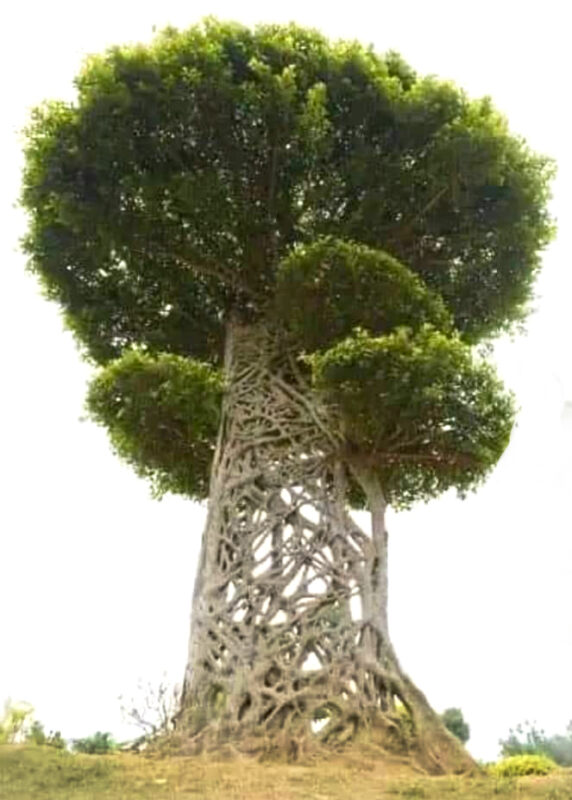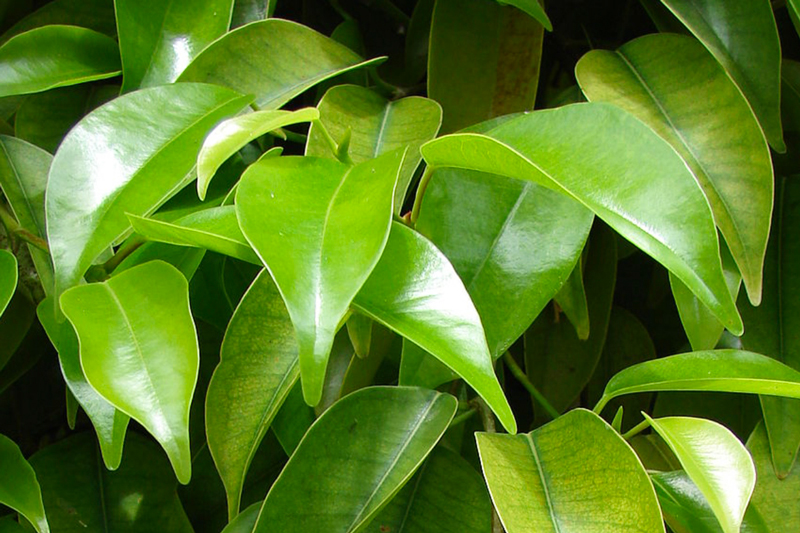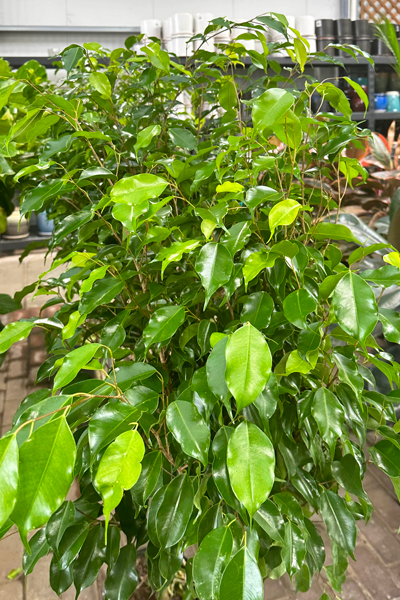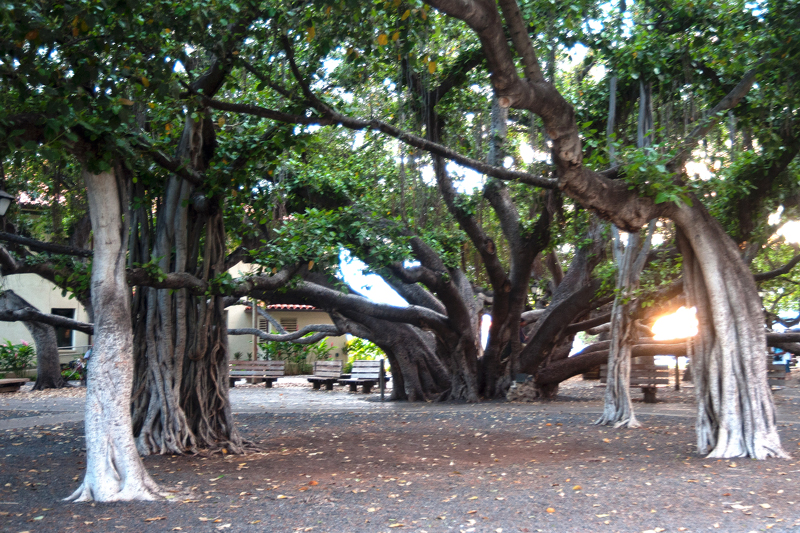Strangling Figs Sound Ferocious
This was the photo, probably from Facebook, that a friend sent me last weekend along with the simple word “Wow!”

So you think to yourself, what kind of a tree could have been growing inside that cage of a trunk structure? How did this all come to pass?
The truth of it is: those aren’t trunks (stems) at all. Those are roots. The tree that you see growing actually sprouted as a seed many feet off the ground. It sent its prop roots down from its lofty perch. Geotropism (growth directed by gravity) took them toward earth, but the support tree’s twigs and limbs probably caused them to criss-cross in the basketweave pattern (with a little help from AI).
Eventually the support tree died from competition, shading, old age, whatever. But I doubt if it was actually “strangled.” But to that tree, the result was the same. The support tree lost.

Who are these odd trees that grow the massive roots capable of doing all this? They’re figs. Weeping figs. Ficus benjamina, one of America’s favorite large houseplants. Now that you know that, think about all those wiry little roots that hang down from the branches. Those are the same roots that could, in a tropical setting, do just what we’ve talked about.

And there’s another fig that you probably know or at least about which you’ve read.

It’s the Spreading Banyan tree in Lahaina, Maui. It, too, is a ficus (Ficus benghalensis) that has done its spreading by these prop roots. I hadn’t checked on its progress since an early story one month after the awful fire – that new shoots were developing. Indeed, big parts of it survived and are thriving, as you can see in this AP story. https://www.hawaiipublicradio.org/local-news/2024-08-07/how-lahainas-more-than-150-year-old-banyan-tree-is-coming-back-to-life-after-devastating-fire# You can also see the remnants of the dead prop roots and their associated trees.
This tree was, and is, as sacred to the locals as the Treaty Oak is to Texans. It’s so great to see it growing strong.
Here are a couple of photos of the Spreading Banyan and what it meant to Lahaina before the fire https://www.wondersofmaui.com/the-banyan-tree/.

Even rubber plants are in this group of great tropical plants. They’ve been bred and selected for several lovely strains, including the red-leafed type.

These tropical figs are all sisters to our edible figs. They’re also cousins to our common mulberries.
It’s a small world.
